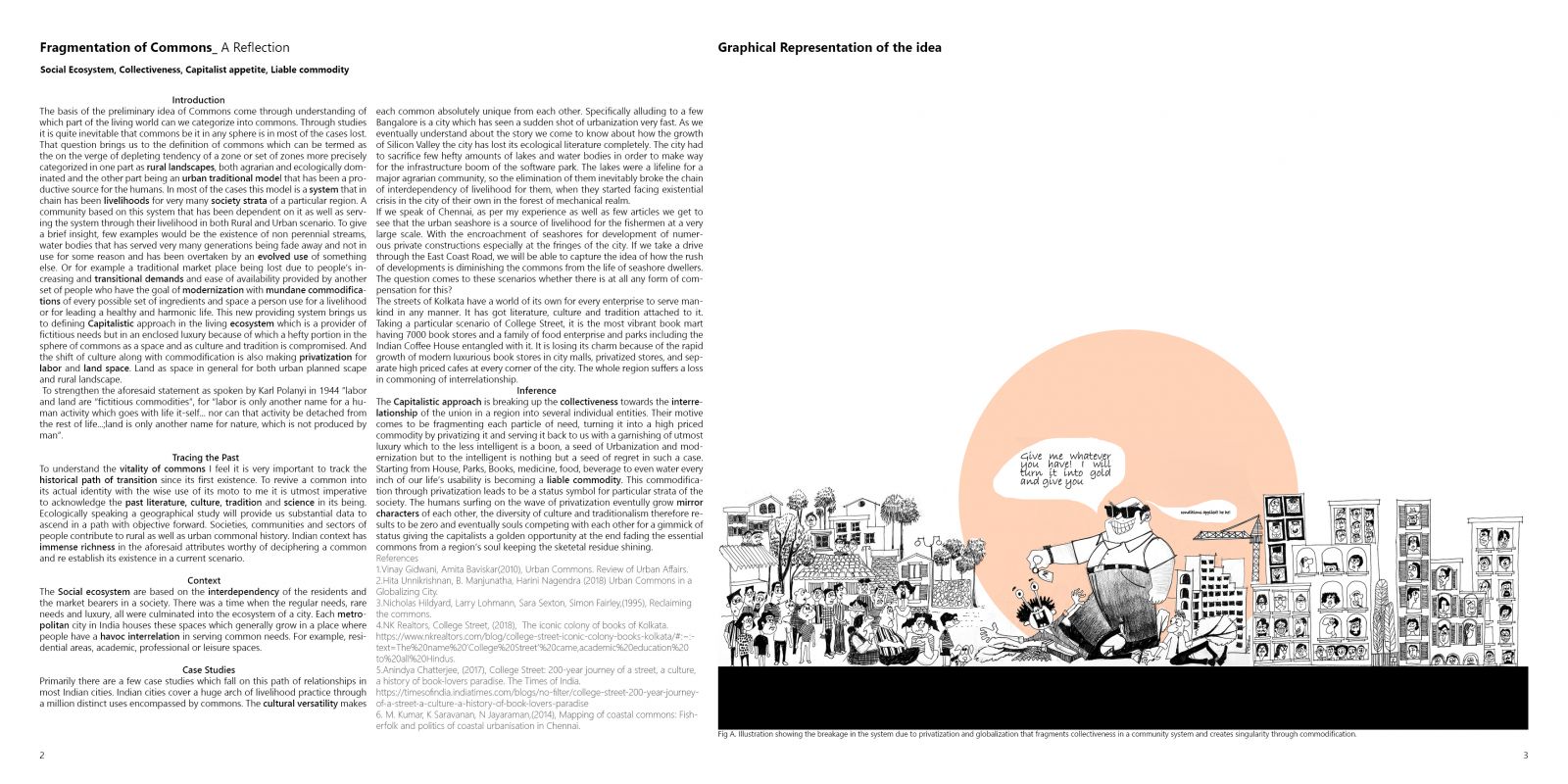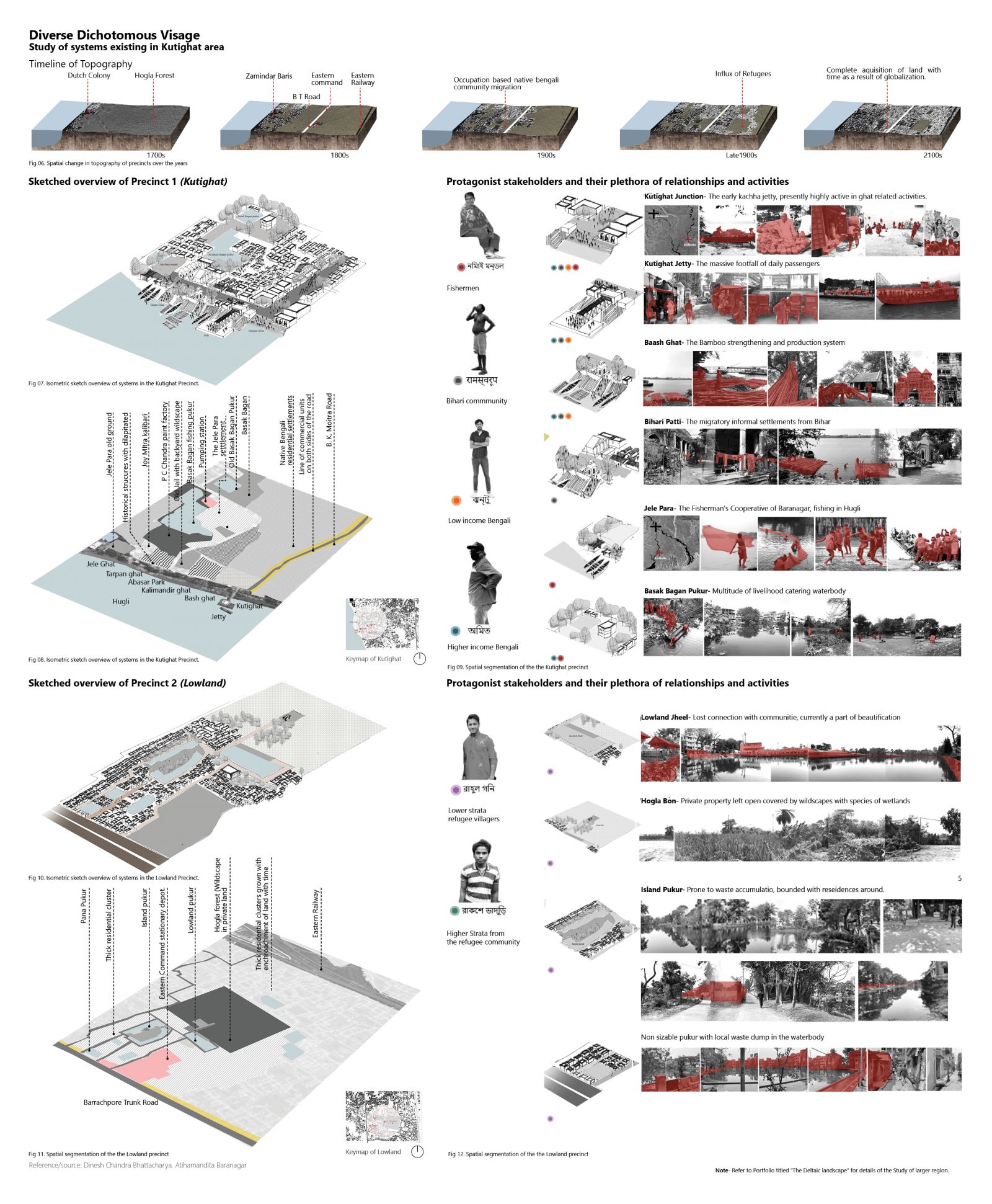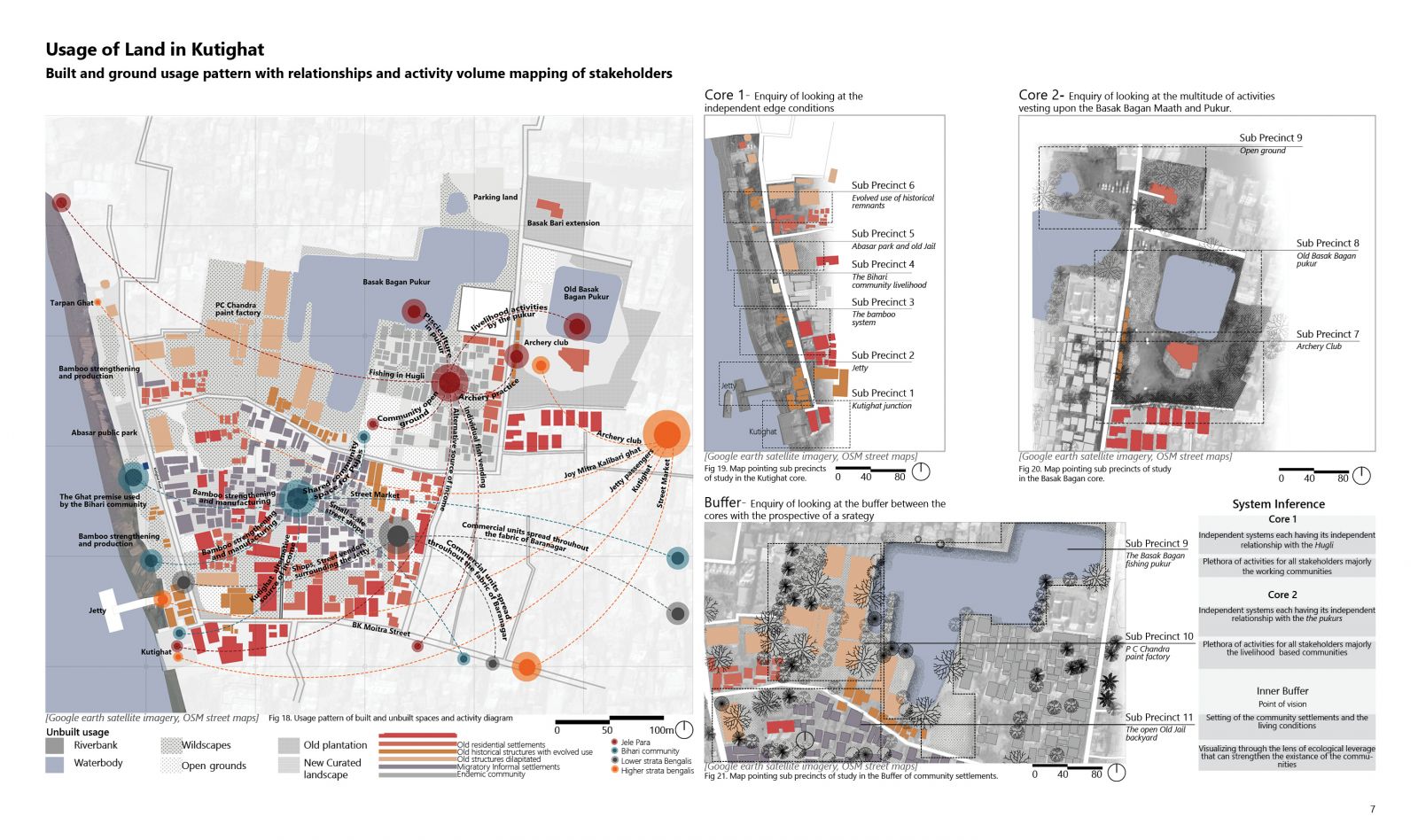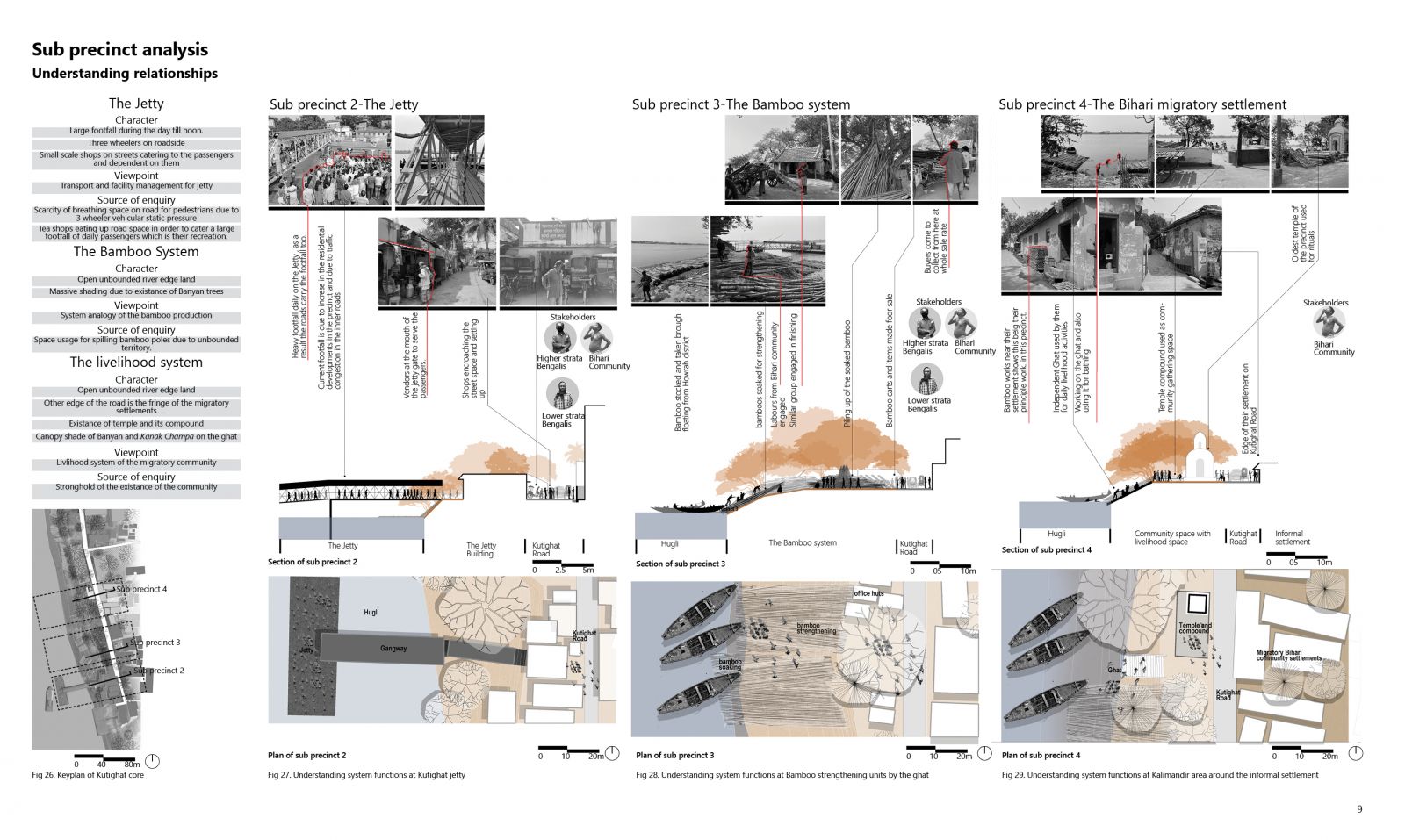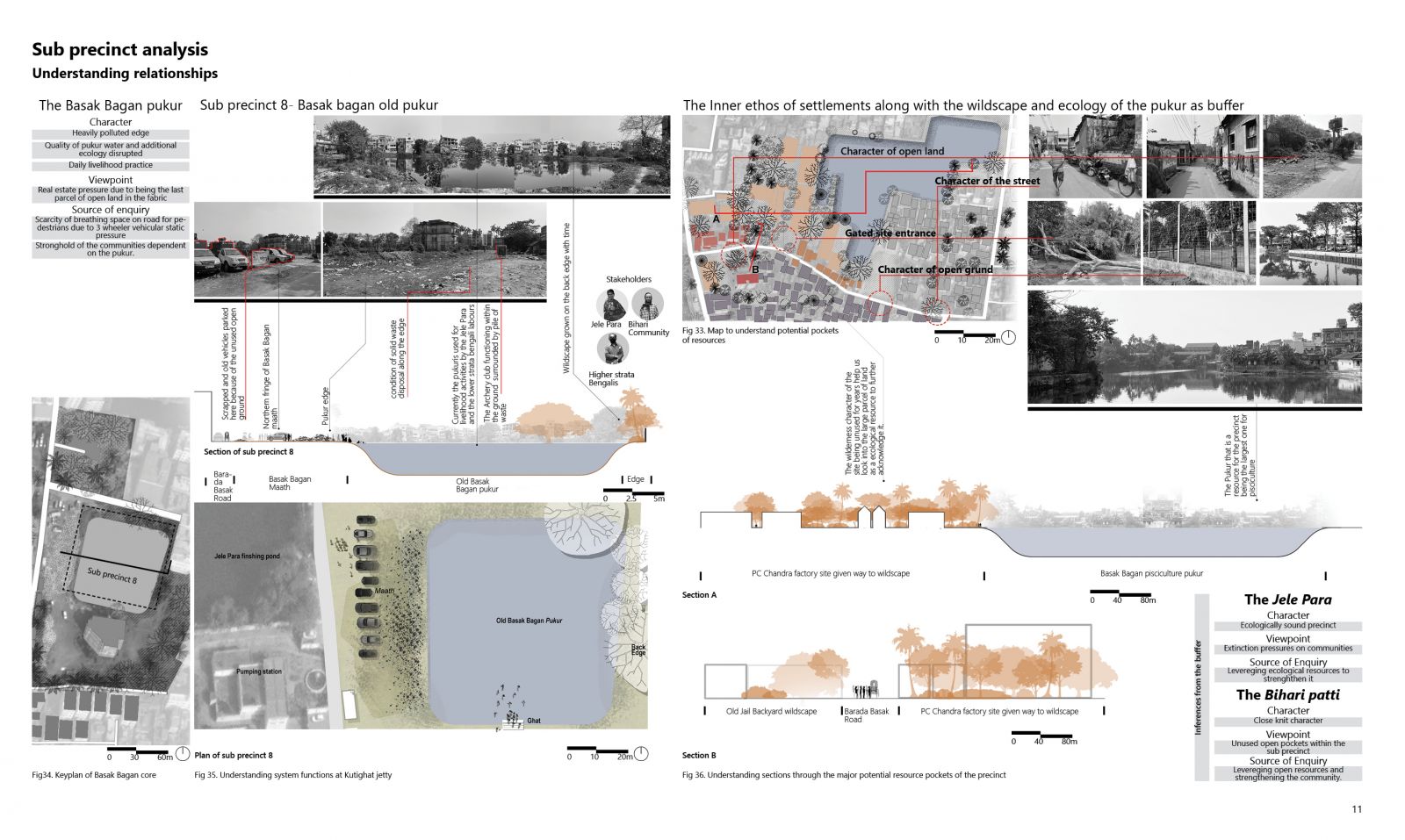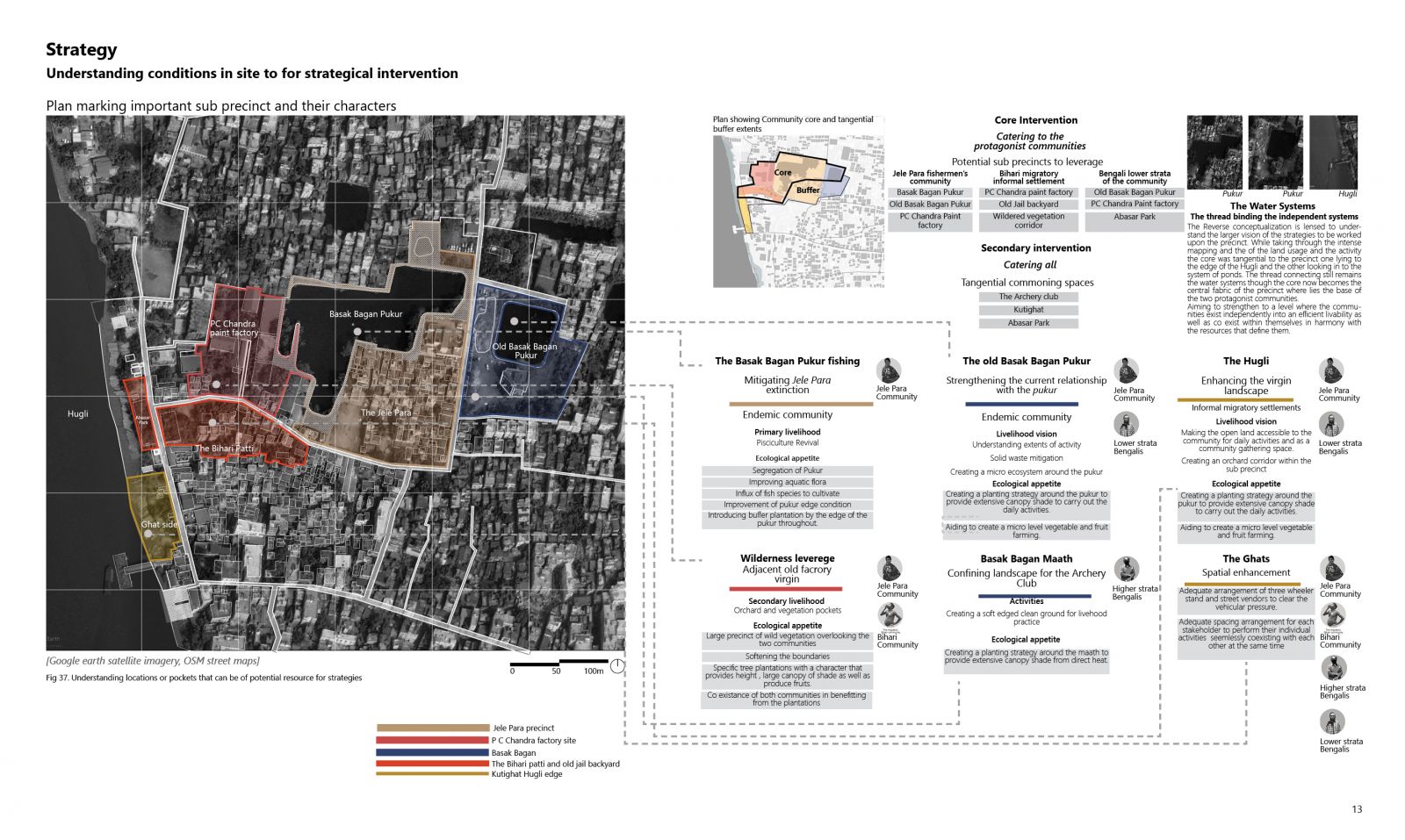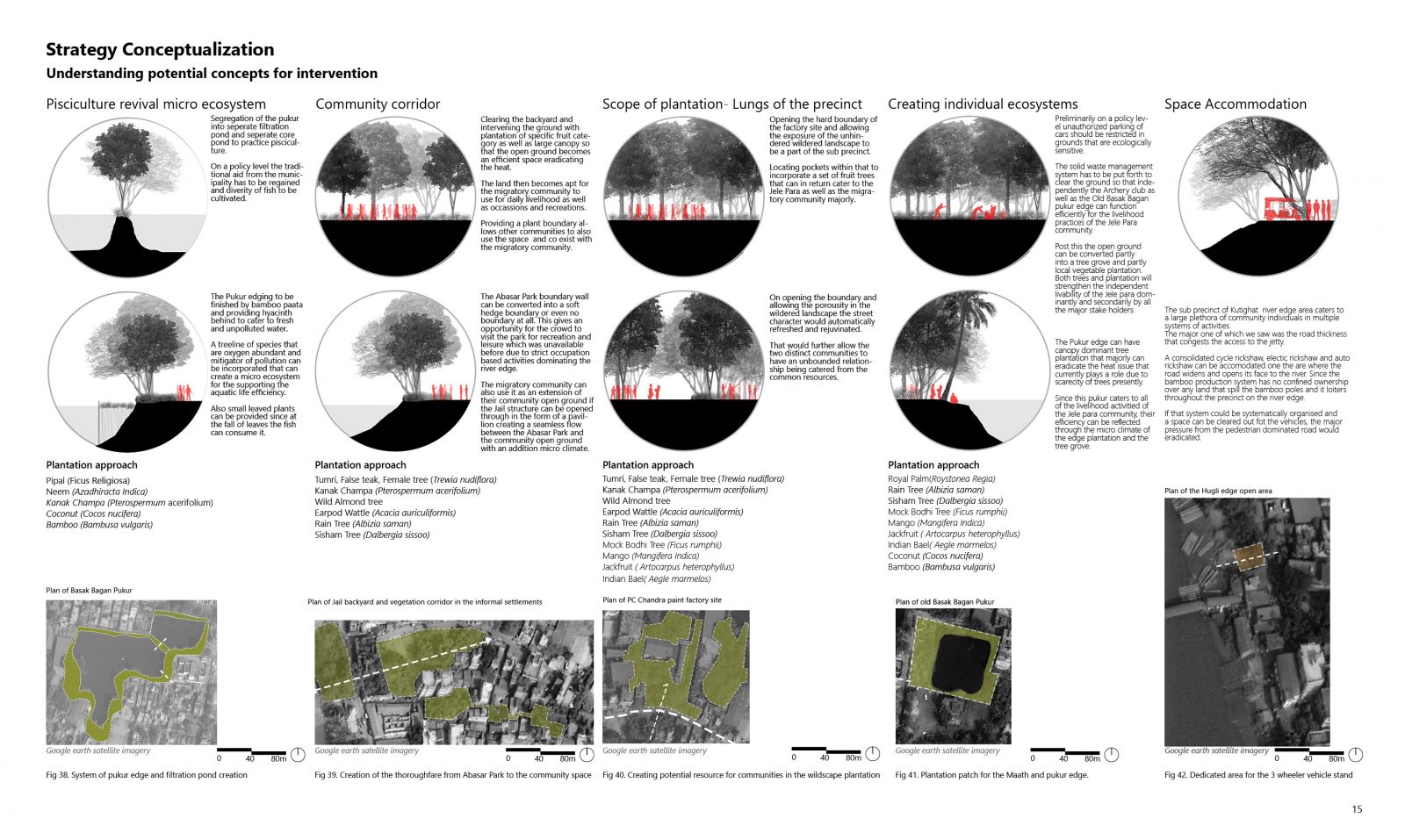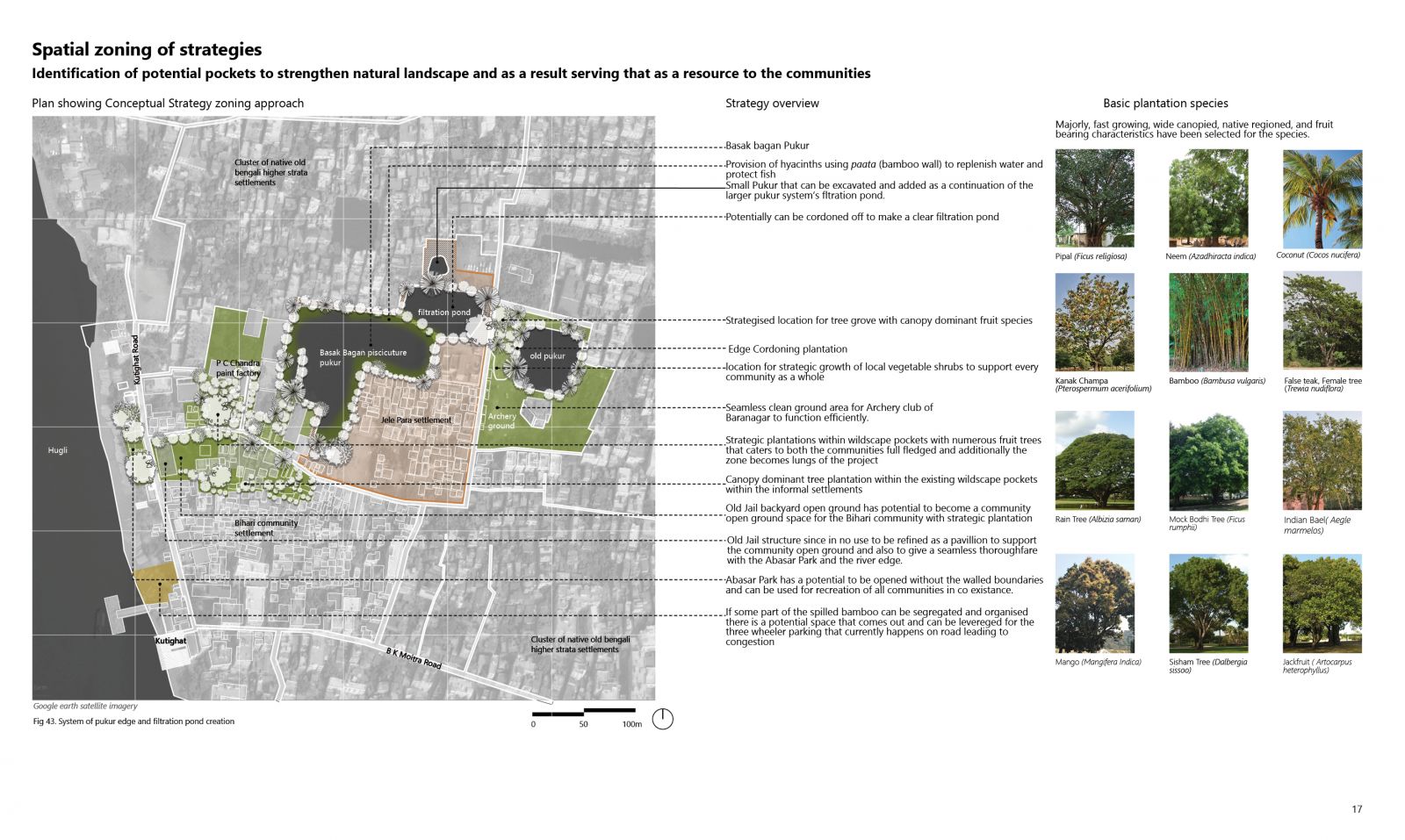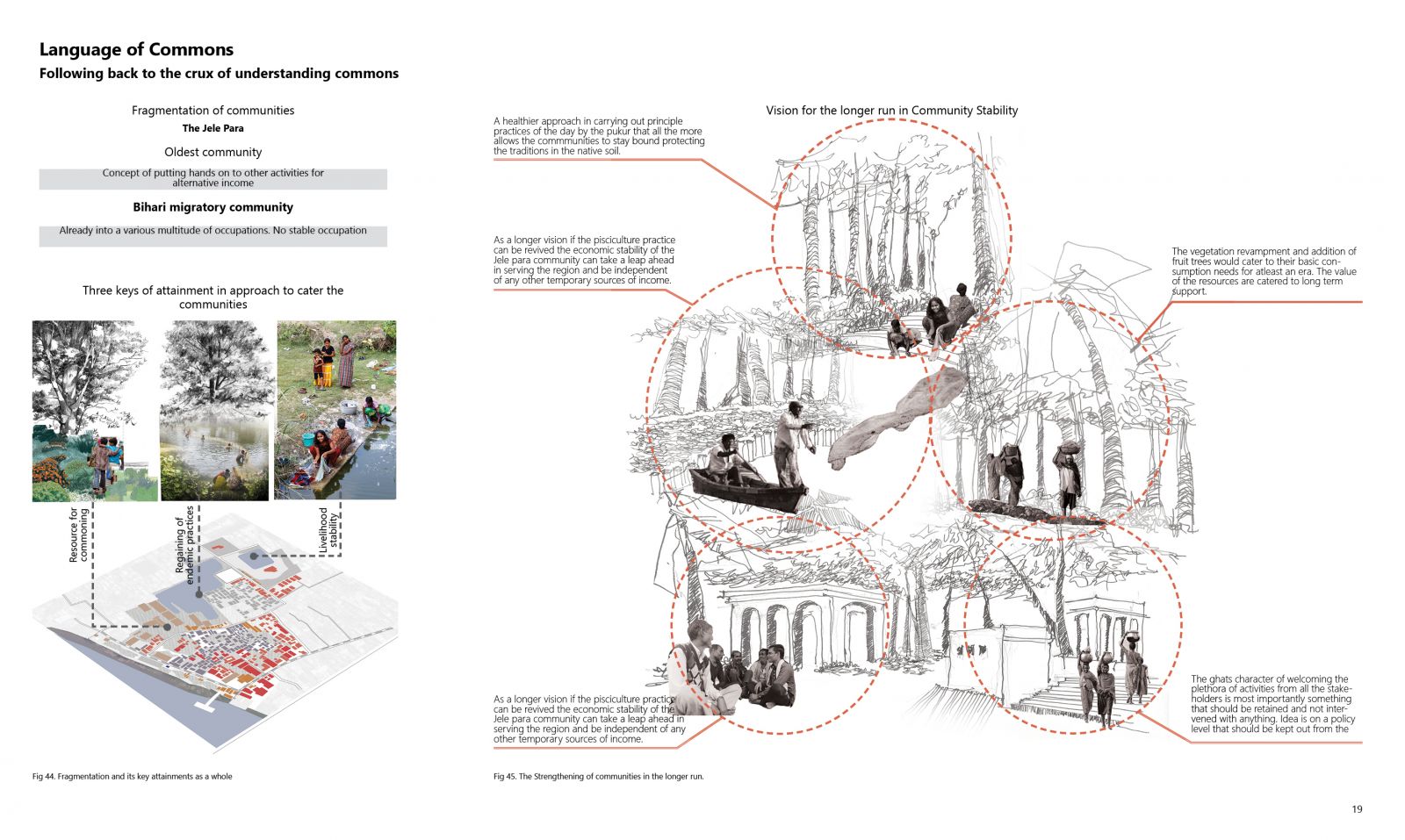Your browser is out-of-date!
For a richer surfing experience on our website, please update your browser. Update my browser now!
For a richer surfing experience on our website, please update your browser. Update my browser now!
The Project Tracing the Bygones majorly revolve around Kutighat in Kolkata that has evolved its character multiple times in multiple eras. A land on the banks of river Hugli due to its geography invited communities to settle in the past. In Kutighat being on the banks a multitude of occupational systems had their initiation. Independent systems including the Ghats and the protagonist stakeholders were studied. The distinct layer of history plays a key role in defining the activities and also the spatial collectiveness of the communities existing that was further studied and strategized to be strengthened for efficiency as commons.
View Additional Work